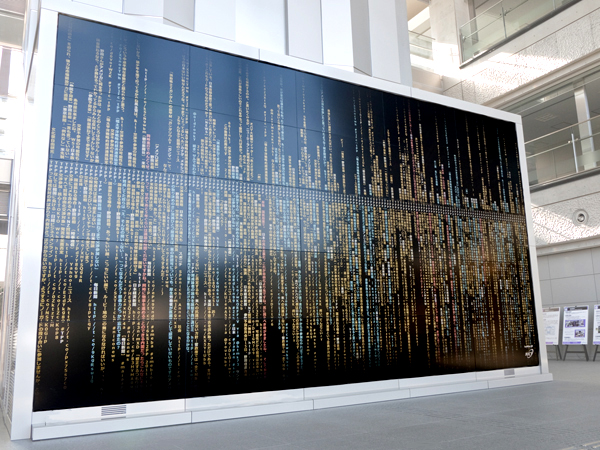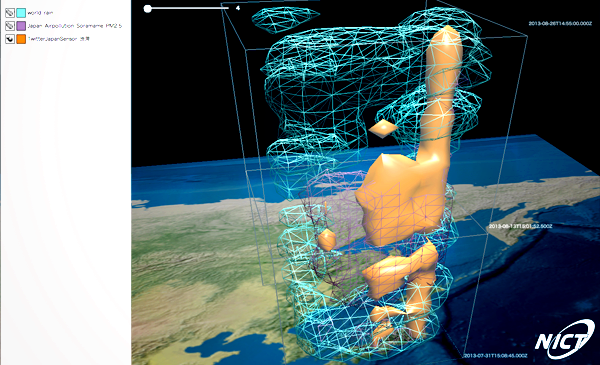Information Services Platform Lab. > Topics
Information Services Platform Lab. > Research > Big Data Visualization Technology
Information Services Platform Lab. > Member
Information Services Platform Lab. > Publications
Information Services Platform Lab. > Resources
Big Data Visualization Technology
The Stream Concordance is an information visualization technology that creates keyword-in-context (KWIC) view of microblog stream messages (e.g., Twitter). It provides quick browsing of trend keywords and various usage contexts of them, and then facilitates real-time capture of public interest.
The Stream Concordance is implemented as a service on the Knowledge-Language Grid. Therefore, by connecting the Stream Concordance with the Twitter Archive Service, it is able to obtain and organize twitters containing a certain keyword submitted to Twitter in real time. In addition, it is also possible to dynamically add various information analysis services between the Stream Concordance and the Twitter Archive Services, so as to analyze the twitters with diverse perspectives. For example, adding the WISDOM information analysis service developed by the Information Analysis Laboratory, allows classification of the twitters into positive and negative ones; adding the proper noun extraction service provides sub keywords identification functions.

Sticker is a visualization data mining service for visualizing heterogeneous datasets in a variety of fields, by plotting datasets on a three-dimensional space having a time axis, a longitude axis, and a latitude axis. Through visualizing events extracted from heterogeneous datasets in a variety of fields on the same space, it is able to visually discover not just the spatial-temporal correlations between events, but also the patterns, trends, and anomalies of the associations between events. Sticker is then useful in helping users to generate new hypotheses based on these discoveries. Furthermore, by checking events updated in real time on Sticker, it is able for users, who hold verified hypotheses, to predict the associations between events in real time.
By connecting the services of Knowledge-Language Grid Testbed and the Sticker, it is able to visually discover associations between real space information obtained from sensor devices and cyber space information extracted from social media, and the Web. In this way, we are able to support the discovery of hypotheses of associations between various phenomena that have not been combined in the past, to help predict phenomena in real time.







